100 years ago, Cecilia Payne deduced that the sun is mainly made of hydrogen – but was encouraged to downplay her findings by her PhD supervisor. Mike Sutton takes up the story
-
Cecilia Payne’s groundbreaking discovery: In 1925, Cecilia Payne, a Harvard PhD candidate, deduced that the sun and stars are primarily composed of hydrogen, challenging the prevailing belief that stellar composition mirrored Earth’s. Despite her accurate findings, she was advised to downplay them in her thesis to avoid academic rejection.
-
Early life and academic journey: Born in 1900 in Buckinghamshire, UK, Payne excelled academically and shifted from botany to physics after being inspired by Arthur Eddington’s lecture on Einstein’s theory of relativity. She faced gender-based discrimination at Cambridge, where women were not awarded degrees at the time.
-
Career at Harvard and continued challenges: Payne moved to the US to work at the Harvard College Observatory, where she joined a group of women known as ‘computers’. Despite her significant contributions, she was underpaid and excluded from Harvard’s official faculty for decades, only becoming its first female full professor in 1956.
-
Legacy and recognition: Payne’s work laid the foundation for modern astrophysics and stellar classification. Though initially overlooked, her contributions were eventually recognized, culminating in a lifetime achievement award from the American Astronomical Society in 1976.
This summary was generated by AI and checked by a human editor
‘What is the stars?’ asks the bewildered Captain Boyle in Seán O’Casey’s Juno and the Paycock. He gets no answer – and indeed, when that classic drama premiered in 1924, stellar chemistry remained somewhat conjectural. For although the spectra of many elements had been detected in starlight, their relative proportions could not yet be measured.
One year later, a Harvard PhD candidate discovered that stars are mainly composed of hydrogen. But Cecilia Payne’s figures differed so radically from the existing professional consensus that her supervisor – fearing the examiners might reject her thesis – advised adding a disclaimer. To secure her doctorate she complied, though further research soon confirmed her original conclusions.
Max Planck may have been over-pessimistic in declaring that a new scientific idea ‘does not triumph by convincing its opponents … but rather because its opponents eventually die, and a new generation grows up that is familiar with it.’ Nevertheless, an innovator’s path can be arduous – especially if that innovator is female. By 1929 the significance of Payne’s discovery was confirmed, yet it was only in 1956 that she became Harvard’s first female full professor. The story of her struggle may still resonate with young researchers today.
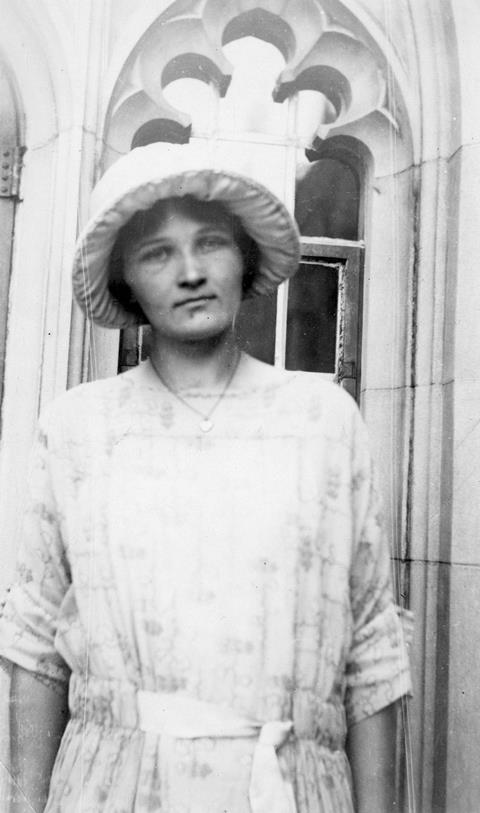
Cecilia Payne was born in 1900 in the UK county of Buckinghamshire. Her multi-talented father - a lawyer, author and musician – died when she was four years old, but despite financial difficulties his widow prioritised their children’s education. When Cecilia was 12 the family moved to London, where she powered through the curriculum at St Paul’s School for Girls, mastering French and Latin, and acquiring some knowledge of ancient Greek and modern German.
Payne was hungry for more knowledge and determined to acquire it. Having become fascinated by science, she won a scholarship to Cambridge University’s Newnham College in 1919, intending to specialise in botany. But in December that year, a public lecture by Arthur Eddington – director of the Cambridge University Observatory – overturned her plans.
A few months earlier, Eddington had led an expedition to the island of Principe in the Gulf of Guinea timed to coincide with a total solar eclipse. They had confirmed Einstein’s general theory of relativity by photographing stars close to the edge of the temporarily obscured sun to reveal the gravitational bending of light rays. Eddington’s narrative made such an impression on Payne that she wrote it down from memory, almost word for word, that same evening. Soon afterwards, she decided to transfer to physical sciences for her second year.
Botany was then an acceptably ‘ladylike’ subject, and several female students had pursued it alongside Payne. But as the sole woman attending Ernest Rutherford’s lectures at the Cavendish Laboratory, she encountered condescension and mockery from academics, technicians and fellow students. Nevertheless, she persisted – and her interest in astronomy was encouraged by Eddington, who recognised her potential when she began asking technical questions at one of the Observatory’s open evenings. Soon she was following current theoretical debates, and making her own telescopic observations.
Harvard-bound
Despite the condescension and extra-curricular distractions, Payne completed her physics course successfully. Yet she could not graduate – Cambridge did not award women degrees until the 1940s. A research career seemed impossible until Leslie Comrie (a Cambridge PhD student) took her as his guest to a British Astronomical Association meeting, and introduced her to the visiting lecturer. This was Harlow Shapley, director of the Harvard College Observatory in the US, to whom Payne subsequently sent a letter requesting employment.
Shapley offered her a job, and the chance to pursue a doctorate. Carrying her father’s old violin – and some new clothes bought with the prize-money from a Cambridge essay competition – Payne boarded the Laconia in September 1923, bound for New York and on to Harvard. There, a group of remarkable women known as ‘the computers’ had been contributing to astronomical research for many years.
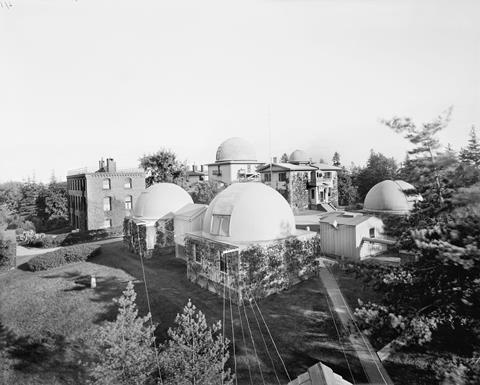
These Harvard computers were not beneficiaries of an equal-opportunities programme. They were hired because they performed routine observations and calculations more reliably than most male employees – and for lower wages. The photographs of stellar spectra which they collated provided the springboard for Payne’s research.
Attempts to deduce the composition of stars from their spectra were not new. In 1802 William Wollaston had noticed a few dark lines in the solar spectrum, and suggested they might be the natural boundaries of its colours. And from 1814 onwards, Josef von Fraunhofer – a meticulous observer and instrument-maker – mapped hundreds more dark lines in solar (and stellar) spectra, as well as identifying distinctive bright lines in the spectra of flames and electric arcs. Their origins, however, remained mysterious.
Many others investigated these phenomena, though with limited success until 1859. Then, a new theoretical framework emerged from a collaboration between chemist Robert Bunsen and physicist Gustav Kirchhoff at Heidelberg University in Germany. Bunsen used spectrum analysis to identify previously unknown elements. Kirchhoff showed that distinctive bright lines in the spectrum of light from any particular flame exactly matched the pattern of dark lines seen when white light was passed through an identical flame and then dispersed by a prism or diffraction grating. Emission and absorption spectra could now be correlated.
These results suggested that the hot cores of the sun and other stars emitted light with a continuous spectrum, which was stripped of certain frequencies while passing through outer layers of incandescent gas, thus generating the dark line patterns observed by spectroscopists. The amateur astronomer William Huggins described this discovery as ‘like coming upon a spring of water in a dry and thirsty land’, and began a study of stellar spectra which eventually earned him a knighthood and the presidency of the Royal Society.
Cataloguing the heavens
Another early spectroscopic astronomer was Father Angelo Secchi, director of the Gregorian Observatory in Rome, Italy. By 1868 he had investigated around 3000 stars, dividing them into four groups (white, yellow, orange and red). During the 1890s and early 1900s, a sevenfold division – based on spectroscopically estimated stellar temperatures – emerged at Harvard, as masses of observations were collated in a comprehensive star catalogue. This project was supervised by the observatory’s director, Edward Pickering, but the actual work was done by his female ‘computers’ – including Annie Jump Cannon, whom historians now credit with creating Harvard’s OBAFGKM classification system, still in use today.
While stellar spectrochemistry still remained qualitative, a ‘principle of uniformity’ was widely accepted – Eddington, among others, argued that the elements in stars existed in proportions similar to those prevailing on Earth. Furthermore, categorising stars remained problematic, since their perceived brightness might owe as much to their nearness as to their brilliance. However, in 1912 two astronomers – working independently, and employing different methods – successfully tackled this problem.
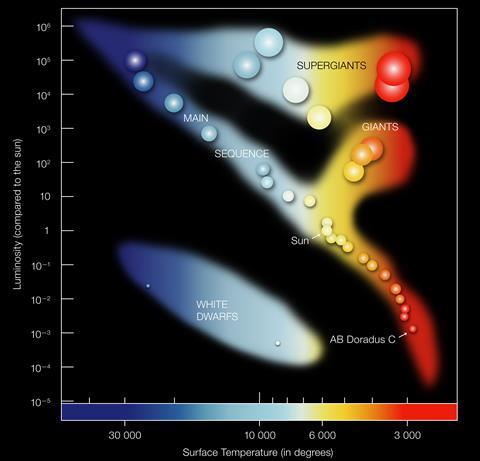
In the US, Henry Russell used parallax measurements to confirm the distances of many stars, enabling him to compare the intrinsic strength of their spectral lines. Meanwhile in Germany, Danish astronomer Ejnar Hertzsprung compared the spectra of stars located in a single cluster (and therefore at very similar distances from us). The resulting Hertzsprung–Russell diagram absorbed the Harvard system, rather than replacing it. Around 90% of stars lie on its ‘main sequence’, providing a basis for stellar classification, and eventually for a theory of stellar evolution.
While Russell and Hertzsprung categorised stars, Denmark’s Niels Bohr was developing his theory of atomic spectra. It offered astronomers fresh challenges, which Payne (who had enjoyed Bohr’s guest lectures at Cambridge) took on eagerly. Bohr proposed in 1913 that atomic electrons make quantum jumps from orbit to orbit – outwards when light quanta are absorbed, inwards when they are emitted. But years passed before his innovation was fully co-ordinated with data from stellar spectroscopy – and a crucial advance came not from Europe or the US, but from India.
Before Payne left Cambridge in 1923, the astronomer Edward Milne alerted her to the work of Meghnad Saha, a physics professor at the Calcutta College of Science in India. Leading astronomers – including Eddington and Russell – then regarded Saha’s theories as overly speculative. But Payne quickly saw their potential, and began applying them to Harvard’s massive collection of spectroscopic data.
Saha had noted the importance of distinguishing between spectrum lines produced by atoms and those generated by ions. However, the H+ hydrogen ion – having no orbiting electrons – could generate no spectral lines, and at stellar temperatures the vast majority of hydrogen atoms should be ionised. Nevertheless, Payne’s painstaking analysis of many photographs of stellar spectra identified strong lines which must have come from atomic hydrogen – in massive quantities.
The obvious inference was that stars – including our sun – are mainly composed of hydrogen (plus a modest quantity of helium, and even smaller amounts of the other elements). However, since her calculations were at variance with the uniformity principle then accepted by most astronomers, Shapley advised Payne to discount them. Reluctantly, she wrote that ‘although hydrogen and helium are manifestly very abundant in stellar atmospheres, the actual values derived from the estimates of marginal appearances are regarded as spurious’. The examiners – one of whom was Russell – approved her thesis.
Acceptance at last?
Meanwhile, Saha’s ideas gradually gained acceptance. A key test was suggested by the fact that although distinctive lines produced by rubidium and caesium ions do appear in the solar spectrum, lines from their neutral atoms do not. Saha’s prediction – that these atomic lines would be visible in the spectrum of light from sunspots (which are cooler than the solar surface) – was confirmed in 1929 by Russell’s observations.
Payne’s thesis was ignored by most astrophysicists
Between 1925 and 1929, the idea that hydrogen was the predominant element in stars went from being unsayable (at least, by aspiring doctoral candidates) to becoming the new professional consensus. Yet Payne’s published anticipation of this was ignored by most astrophysicists. Meanwhile, as a recently qualified PhD with no secure academic status, she needed to build a career – a challenging task, particularly after the 1929 stockmarket crash.
After receiving her doctorate from Harvard’s sister institution – the all-female Radcliffe College – Payne had accepted a poorly paid post as Shapley’s technical assistant at the Observatory. She continued her research – and published prolifically – but there was no possibility of her joining Harvard’s all-male teaching staff. Eventually, she would be invited to give astronomy lectures there – yet for years her name was somehow omitted from the published programme. Nevertheless, in 1931 she felt settled enough to take US citizenship.
With Rosevelt’s new deal and Hitler’s seizure of power, 1933 was a year of political turmoil. It also brought dramatic changes to Payne’s personal life. While visiting the observatory at Pulkovo (near Leningrad, now St Petersburg), she witnessed the desperate conditions endured by scientists working in the Soviet Union. Shortly afterwards, at a conference in Germany, she met Sergei Gaposchkin – a White Russian exile who had recently completed an astronomy PhD in Berlin. He now faced internment in Hitler’s Germany, or deportation to Stalin’s Russia (probably followed by imprisonment or execution).
Sergei asked Payne for help, and through contacts in London she arranged an ‘international passport’ giving him official refugee status. She also persuaded Shapley to offer him a job at Harvard’s observatory – promising that he would deliver good work for a low salary. In November 1933 Sergei arrived in the US, and in March 1934 he and Payne were married. She adopted the surname ‘Payne-Gaposchkin’ to ensure that future publications – of which there would be many – were recognisably her own.
Though not without its problems, this was a happy marriage. Sergei’s modest talents (and limited command of English) kept him at a subordinate level in the observatory. And when Payne’s growing professional reputation brought invitations to far-off events, he usually remained at home with their children – all three of whom eventually graduated from university, with two subsequently earning doctorates.
After Shapley retired as director in 1954, his successor raised Payne’s miserly salary – a belated recognition of her contribution to the observatory’s academic reputation. In 1956, after years of teaching at Harvard, she was finally awarded full professorial status – the first woman to be thus honoured. And in 1976 – three years before her death – she received the American Astronomical Society’s lifetime achievement award. Her career had been an uphill struggle, but it made the pathway more accessible for those who followed.
Mike Sutton is a historian of science based in Newcastle, UK






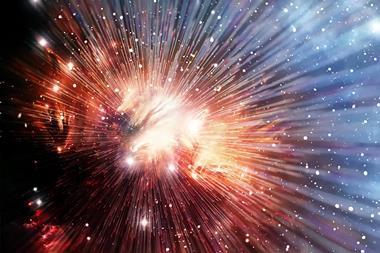

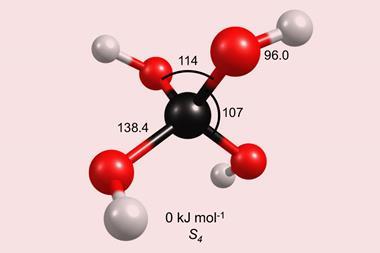


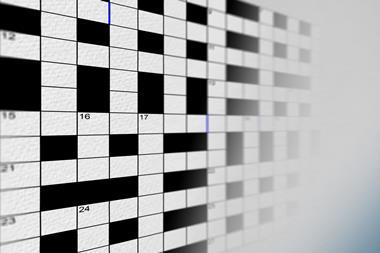

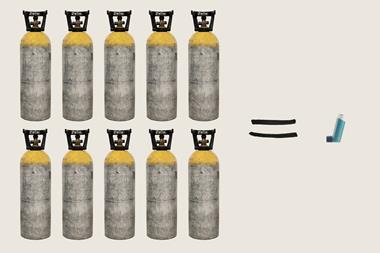



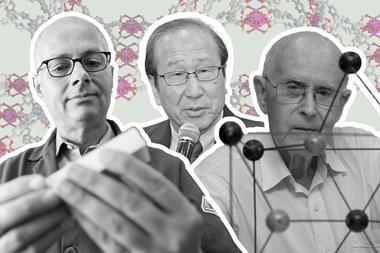
No comments yet